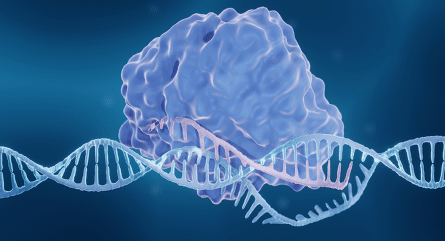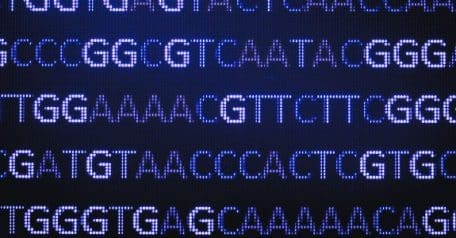Manipulation of transcription is complicated and can involve several different transcription factors over a large segment of the genome but CRISPRi and CRISPRa are tools that make it more feasible [1]. Gene expression is controlled in nature by transcription factors that bind to certain DNA sequences upstream of genes at the promoter region and results in either repression or activation of their expression. In both cases the result is temporary and if the cells or model organisms survive this event, they can recover and eventually begin to express the gene as before [2]. Unlike knockout and mutation/knock-in methods (which permanently alter genomic DNA sequences), these methods have traditionally involved interfering with RNA molecules (either mRNAs or non-coding RNAs) natively produced by cells. Traditional gene knockdown does not affect or even involve host DNA. However, a newer knockdown technique derived from CRISPR genome editing uses a protein known as dCas9, which is a mutant, enzymatically-dead form of the CRISPR‑associated protein Cas9. This enzyme will not cause any enzymatic cleavage of the target DNA so there will not be any permanent change to the genetic material [3]. dCas9 can cause specific knockdown effects by interacting with host DNA instead of interfering with host RNA. Gene knockdown is a major approach which has long been used in cell and molecular biology research to determine the function or role of a given gene.
CRISPR is widely known as a tool useful for complete gene knockout. However, there are also ways in which CRISPR can be used to cause transient gene knockdown known as CRISPR interference or CRISPRi. This technique can be done with or without the use of additional proteins. When no other proteins are involved, guide RNA directs dCas9 to a target site of interest where it will block transcription by binding to the promoter or some other regulatory region of the gene of interest. As the dCas9 enzyme is released from the binding site or cleared from the cells, gene expression will return to normal. In some cases, dCas9 will work in tandem with an effector protein to repress transcription. A guide RNA will still direct the dCas9 to the target site in the same way as before, but it now is doing it in combination with the effector protein similar to how RNA interference (RNAi) has been used. For example, dCas9 coupled to a known repressive chromatin modifier domain Kruppel associated box, KRAB, to create a dCas9 fusion protein which binds and represses transcription factors has been shown to successfully repress transcription [1]. As with before, the DNA sequence is not altered, so when the dCas9-KRAB protein is cleared, the targeted gene is expressed again.
CRISPRa utilizes dCas9 fused to a transcriptional activator in the same way that CRISPRi does in which it is directed to the targeted site by a complementary guide RNA. In this case the dCas9 fusion protein is directed to the promotor region where it binds and results in activation, which has been shown to work if an activation domain is added to the dCas9 protein [2]. The difference in this system is that now the end goal is to increase expression of the target gene. It is often used for genetic screening experiments or for overexpression of proteins of interest. In either case, CRISPRa and CRISPRi both allow for a more controlled method to program repression and activation of gene expression to help advance research in gene function.
References
- Gilbert LA, Larson MH, Morsut L, et al. CRISPR-mediated modular RNA-guided regulation of transcription in eukaryotes. Cell. 2013;154(2):442-451.
- Bikard D, Jiang W, Samai P, Hochschild A, Zhang F, Marraffini LA. Programmable repression and activation of bacterial gene expression using an engineered CRISPR-Cas system. Nucleic Acids Res. 2013;41(15):7429-7437.
- Qi LS, Larson MH, Gilbert LA, et al. Repurposing CRISPR as an RNA-guided platform for sequence-specific control of gene expression. [published correction appears in Cell. 2021 Feb 4;184(3):844]. Cell. 2013;152(5):1173-1183.
For research use only. Not for use in diagnostic procedures. Unless otherwise agreed to in writing, IDT does not intend for these products to be used in clinical applications and does not warrant their fitness or suitability for any clinical diagnostic use. Purchaser is solely responsible for all decisions regarding the use of these products and any associated regulatory or legal obligations. Doc ID: RUO23-1980_001
























